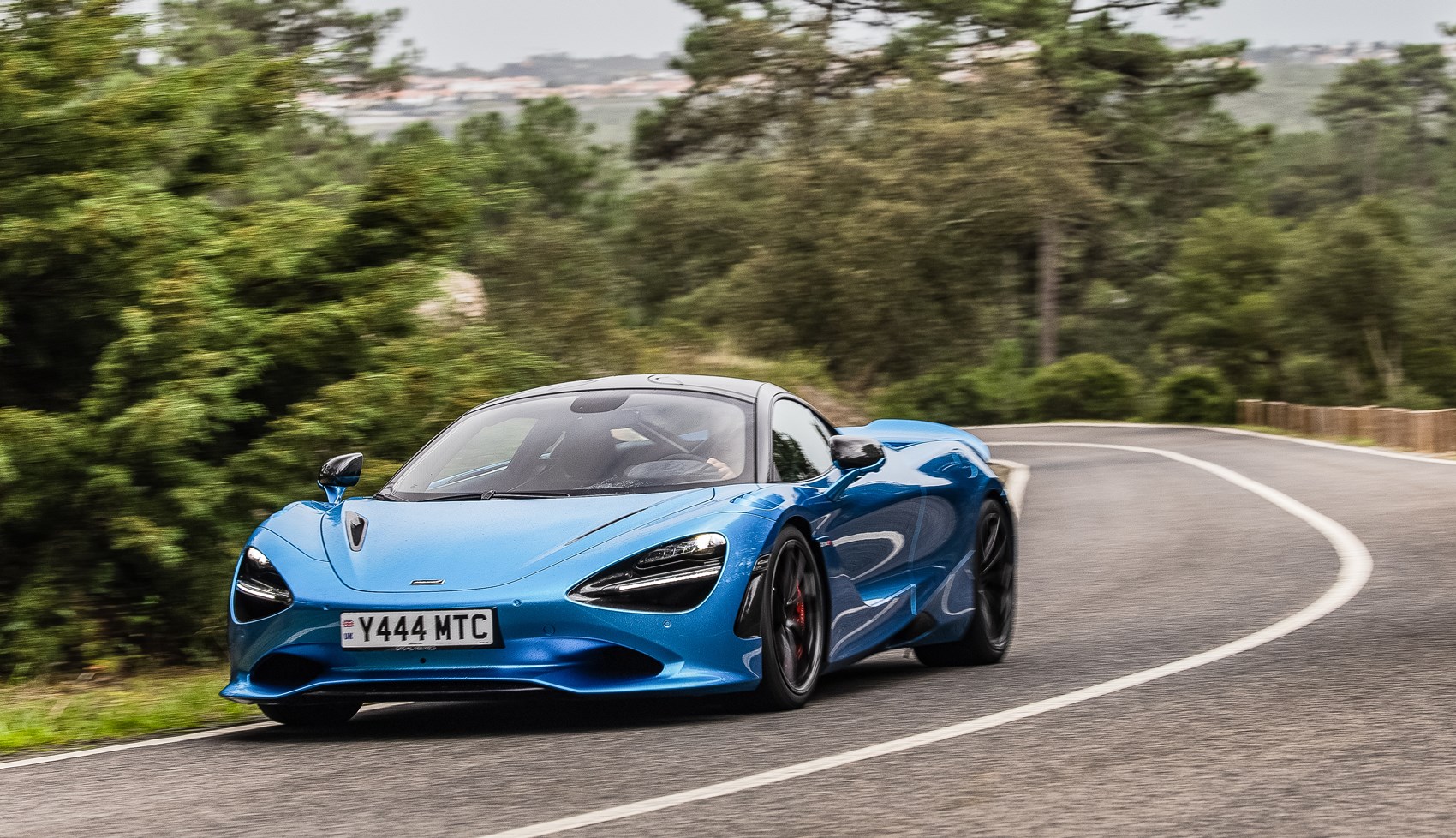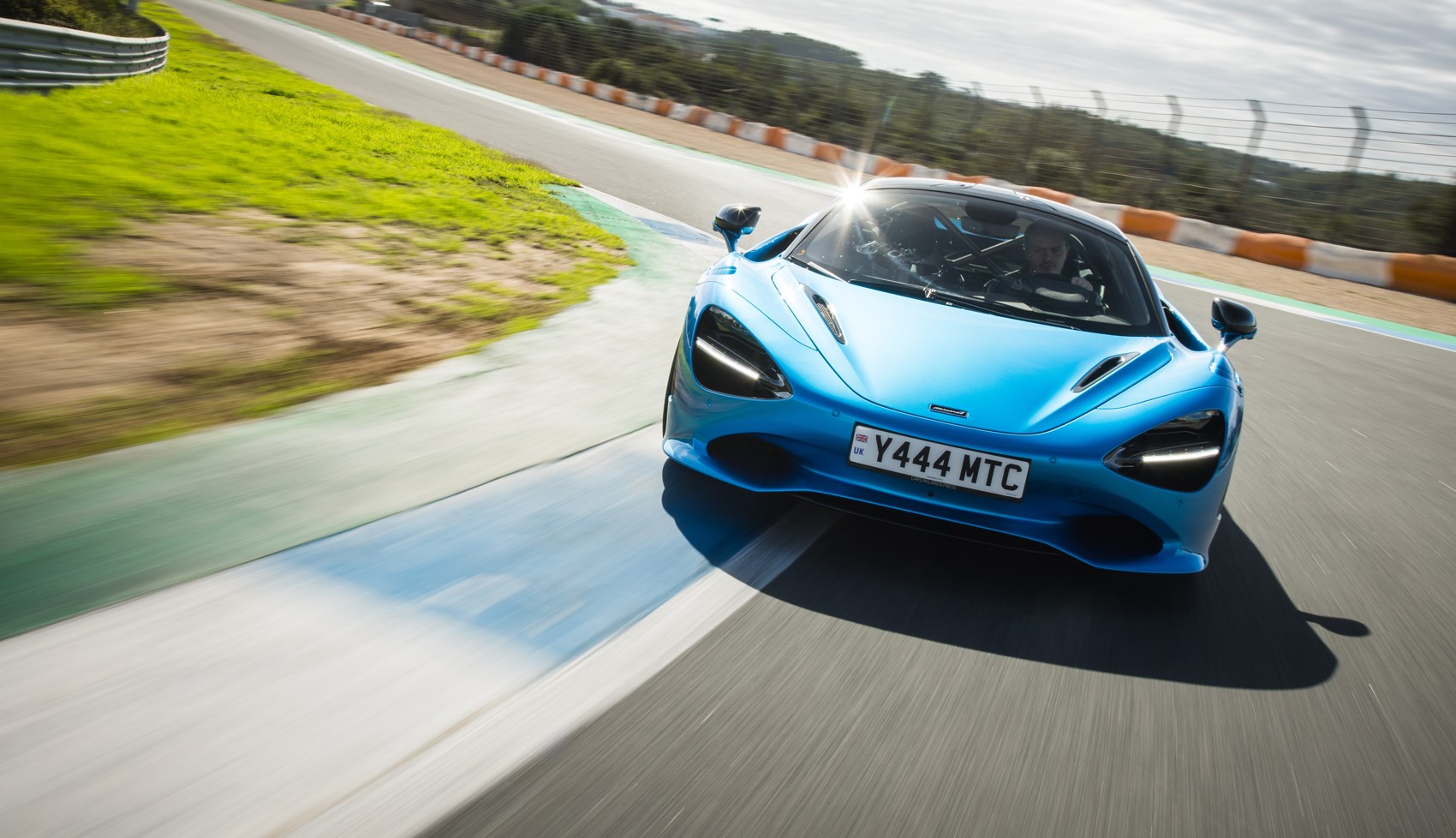► McLaren’s 750S driven on road and track
► Coupe and Spider models tested
► Evolution over revolution here
It’s tricky improving something that was already so good. And yet, that really is the goal for the new McLaren 750S: to distill everything that made the fantastic 720S and 765LT and inject a little extra spice.
While it might look an awful lot like its predecessors, we assure you: the new 750S really has evolved from its forebear. We’ve driven McLaren’s latest supercar on road and track in Portugal just how much has changed.
How has the 750S evolved?
In lots of small but meaningful ways, when compared to the 720S at least – so much so that McLaren chief engineer Sandy Holford tells us that 30 per cent of the 750S is new.
McLaren’s M840T twin-turbo V8, complete with its flat-plane crank, develops 30bhp and 22lb ft more than before via increased turbo boost pressure and a bespoke engine calibration, as well as lightweight pistons nabbed from the 765LT. The gearbox has a 15 per cent shorter final drive ratio and the shift maps have been recalibrated for snappier shifts and better response in top (i.e.: seventh) gear. It also features a 6mm wider track, a quicker steering rack and tweaks to the twin-valve dampers in the suspension system mean a three per cent softer setup at the front and four per cent stiffer at the rear.

Tweaks to the bodywork include a redesigned front end including shallower ‘eye-sockets’ and an active rear wing (which also acts as an air brake) that has 20 per cent more surface area than the 720S’s one. If you spec the coupe, you’ll also be able to option a window in the cabin that allows you to see the engine. If you choose the Spider, the glass roof includes an electrochromatic sun shade.
The 750S has also been on a diet to the tune of 30kg, with details like the new high-up centrally-mounted exhaust shaving off 2.2kg and optional wheels taking off another 13.8kg. Holford and the McLaren team at large are very keen to point out that the 750S’s weight figure (1389kg for the coupe, 1438kg for the Spider) is ‘200kg lighter than the nearest competitor’ – which is very likely the Ferrari 296 GTB. In fairness to the Ferrari, a lot of those additional kilos will likely come from its battery pack and e-motors – something the 750S does without.

That all might sound obsessively nerdy (because it is), but the aim for McLaren’s engineers was to inject a little bit of extra spice and excitement over the 720S. The aim was also to increase the car’s usability, with the portrait infotainment screen getting a bit of a reworking with new, quicker software as well as the inclusion of Apple CarPlay (although Android Auto isn’t included) and USB-C sockets. The system itself works fine enough, with a plain menu layout and map structure.

The car’s drive mode switches have also been configured, with the handling and engine characteristics – as well as switching on manual mode – being moved to rocker paddles that sit atop the driver’s instruments (allowing them to be reconfigured without your hands leaving the wheel). On top of that, the 750S introduces an individual mode (via a button the McLaren team nickname the ‘Speedy Kiwi button’ because of the funny graphic it uses) that allows you to apply your own preferred settings with one press.
How does it drive on the road, then?
Even from start-up, the 750S is getting the blood pumping. The shuddering and revving from start-up is deliberate (it’s another thing the engineering team have deliberately tweaked to get those goosebumps going from the off), and when you’re just pootling around town the 750S cruises smoothly, even if it feels a smidge wide through tight roads.

As you gather pace, the V8 really comes into its own. The 750S is blisteringly quick, shunting you into the horizon with the same commitment you and your right foot has. There’s a teeny weeny smidge of lag if you apply a lot of throttle in a high gear below 3000rpm as the turbos come on boost, but power delivery has generally been improved over its predecessor. So much so that, generally, all of that 740bhp available to you doesn’t really feel unwieldy or twitchy; you’re not spending any time second-guessing the power-to-grip calculation.
The ‘box’s auto programming is well-judged, shifting down with enough throttle press without being too twitchy even in Sport or Race powertrain modes, but the tactile clack you get from using the metal-hewn rocker paddle is too juicy to pass up.

The steering and the brakes are the same. That sweetly weighted, hyper-accurate electro-hydraulic steering McLaren has become known for still excels for offering maximum communication and feel without feeling overly-assisted or artificial. Ditto the brakes with Woking’s classically stiff pedal feel – there’s not one iota of misjudging how much braking force you need whether you’re pottering about or setting a new hypothetical lap record on your favourite B-road.
And that’s kind of the nub of driving the 750S. It all feels so intuitive. It’s such a cliché but all of that ‘being one with the car’ guff starts to make sense when you have some serious seat time in one of these. The 720S was the same story, as was the 765LT.
But what really separates this from the 720S, however, is the much-improved soundtrack. Even in its most mellow drive modes, the 750S now really does sound like a supercar. The engine note is throaty and bassy, augmented with some almost phlegmy coughs and sputters on lift-off in Sport. Time your throttle and gearshift inputs just right and singular and loud bangs are enough to startle you, almost as if you’ve got a trigger-happy Brandon Cooper in army camo resting on the rear deck with a .50-caliber. McLaren’s engineers say the exhaust note sounds the best in the Spider with the roof up, but the retractable rear window lowered – and we agree.

The only niggle we’d point out are the seats. Go for the standard comfort-spec ones (which can be electrically-adjustable if you tick the option box) and they’re thickly padded and supportive, even providing enough side bolstering for hard cornering on the road – all good, and the ones we’d choose day-to-day. Step up to the carbonfibre racing seats, though, and they’re a little too thinly padded to the point I got a bit of upper back ache after a while behind the wheel. There are also track-spec ‘Super Lightweight Carbon’ seats that allow a harness to be fitted – these are thin, too, and best specced if you’re going to do track days regularly.
Speaking of track days, how does the 750S handle on one?
We spent some time at Estoril circuit in Portugal, driving 750S models wearing Pirelli Trofeo R tyres (compared to the road car’s P Zero rubber) – and what a machine.

A lot of what makes the 750S drive so intuitively on the road is translated directly, if perhaps more acutely, on a circuit. All that 740bhp unleashed without speed limits is truly ferocious as you whip through the gears one after the other. And hitting 170mph+ at the end of Estoril’s straight proved that the car really had more to give, almost making the car’s claimed 206mph top speed feel easily achievable.
Then, when you’re standing on those fabulous brakes (there’s a Track Brake pack we highly recommend even for the light track day driver), you’re thankful for the lack of a mushy pedal. You can even feel how much the air brake helps you see it fully deploy in your rear-view mirror.

Trust develops quickly through each corner as time behind the wheel progresses – the 750S isn’t daunting to drive on track despite its incredibly serious engineering. Instead, it merely relays exactly what you’re doing back to you like you’ve got a gigabit ethernet cable plugged directly between your brain and the car’s ECU. Lift off the throttle around a sweeping corner and it will initiate a slide, but it’s progressive and gentle and easy to catch. Hell, McLaren even gives you software (Variable Drift Control) that allows you to tailor how much the car will hang its backside out if you’ve got a local tyre fitter on speed dial.
McLaren 750S: verdict
We loved the 720S so much it was our 2017 Sports Car Giant Test winner. We loved the 765LT so much it was our 2022 Sports Car Giant Test winner. So, the fact the 750S is arguably designed to bring the best of both and yet split the difference means it’s a given it would be so good. It’s almost a foregone conclusion; business as usual for McLaren’s core supercar series.
But don’t take that point to mean we’re complaining. The nuances of the 750S’s upgrades over the 720S, like the new throaty exhaust note for example, are welcome and inject a little bit of extra charisma that were missing before.
All in all, the 750S is ferociously fast, adjustable and usable on the road and delivers proper supercar thrills. On track, meanwhile, it’ll be flattering and friendly to track day novices and newcomers, while remaining properly exciting and communicative for the supercar-driving cognoscenti. Go for a Spider and you’ve got one hell of a do-anything supercar.
